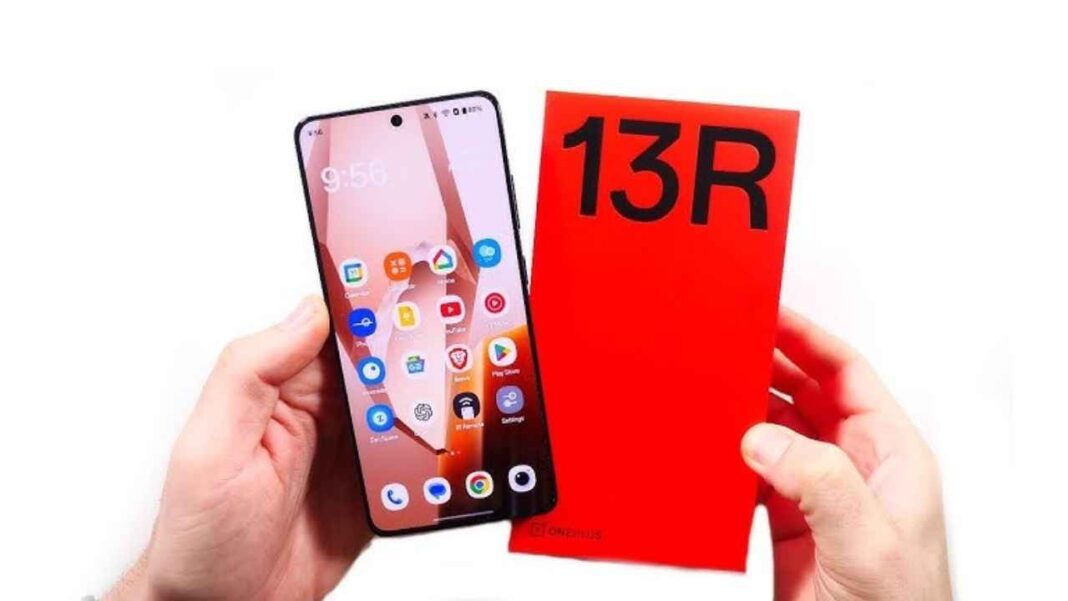OnePlus launched the OnePlus 13R globally on January 7, 2025, positioning it as a “performance flagship” that delivers many of the high-end benefits of its premium models, but at a more accessible price point. It aims to hit a balance: strong specs (especially in processing, display, camera) and some compromises relative to its more premium siblings.
Design, Display & Build
The OnePlus 13R sports a flat 6.78-inch ProXDR LTPO AMOLED display, with a 120 Hz refresh rate, dynamic refresh ranging from 1 to 120 Hz, and an impressive peak brightness of ~4,500 nits. This makes it well-suited for both daylight visibility and battery saving in darker conditions. The glass is protected by Corning Gorilla Glass 7i on both front and back, encased in an aluminum frame, with a body thickness of about 0.80 cm and weight around 206g. There’s also an IP65 rating for dust/water resistance.
Performance & Hardware
Under the hood, the 13R uses the Snapdragon 8 Gen 3 chipset — the high-end processor from Qualcomm (though not the ultra-premium “Elite” variant that some flagship phones use). It comes with 12 GB or 16 GB LPDDR5X RAM and internal storage of 256 GB or 512 GB UFS 4.0, depending on variant.
In terms of cooling, OnePlus has beefed up its vapor chamber system — naming it Dual Cryo-Velocity Vapor Chambers — to better manage heat under load, for example gaming or heavy multitasking.
Battery & Charging
One of the standout upgrades in the OnePlus 13R is its battery. It houses a large 6,000 mAh cell, which is quite generous even by flagship standards. For charging, it supports 80W SUPERVOOC wired fast charging (though in certain regions or lower-tier variants some specs differ) which gets you a rapid top-up. No wireless charging is provided, which is one of the compromises here.
Cameras & Imaging
The camera setup is quite competitive for its segment:
- A 50 MP main (Sony LYT-700) sensor with Optical Image Stabilization (OIS) to help low-light shots.
- A 50 MP telephoto lens with 2× optical zoom, which adds meaningful utility compared to ultra-wide or macro lenses that are often less useful.
- An 8 MP ultra-wide camera to capture wider scenes.
- On the front, there’s a 16 MP selfie camera. Video is supported at 1080p for front recording; rear cameras can go up to 4K at 60fps.
Image processing gets a boost from OnePlus’s AI features (e.g. AI Unblur, AI Reflection Eraser) and algorithms to manage exposure, motion, etc.
Software & Other Features
The phone runs OxygenOS 15, based on Android 15, with promises of multiple years of updates (usually 4 years of OS updates + 6 years of security updates in OnePlus’s scheme) in markets such as India. There is also the inclusion of OnePlus AI features, and some newer tools to improve photography, usability in different conditions (e.g. display responsiveness when wet), etc.
Other physical features: in-display fingerprint sensor, stereo speakers, and alert slider are retained. The device is dual-SIM. Design-wise, the 13R opts for a flat screen rather than curved, which some users may prefer.
Strengths & Weaknesses
Strengths:
- Excellent display: bright, high refresh rate, LTPO technology helps with smoothness + battery efficiency.
- Solid camera setup, especially with the useful telephoto lens (2×) and good main sensor.
- Large battery capacity and fast charging — ideal for heavy users.
- Premium build: Gorilla Glass protection, aluminum frame, IP rating, etc.
- Good value, considering what it offers versus higher-priced flagships.
Weaknesses / Trade-offs:
- No wireless charging. Some flagship phones in similar or slightly higher price segments offer it.
- Flat display (for some, this is a pro; for others who like curved, it’s a con).
- In some regions, certain features or charging speeds might be lower.
- Some users may want more zoom capability or higher resolution ultra-wide. Also, front video limited to 1080p in many cases.
Pricing & Variants
In India, the OnePlus 13R is priced starting at ₹42,999 for the base variant (12 GB RAM + 256 GB) and about ₹49,999 for the higher variant (16 GB + 512 GB). It comes in two colour options: Astral Trail and Nebula Noir.
OnePlus has also offered some launch / festive discounts (depending on region / retailer) that make the device somewhat more accessible.
Conclusion: Who’s the OnePlus 13R For?
For users who want flagship-level performance without paying flagship premium, the 13R is a strong option. If you:
- Use your phone heavily (gaming, video streaming, multitasking),
- Care about camera quality (especially main + telephoto),
- Want long battery life,
- Prefer bright displays for outdoor use,
then 13R could hit the sweet spot.
If your priorities are wireless charging, ultra-high zoom, or extremely premium materials (e.g. periscope zoom, extremely curved glass, ceramics, etc.), then you may need to look at more premium phones. But for most users who want high performance and good features, the 13R offers a compelling mix.

